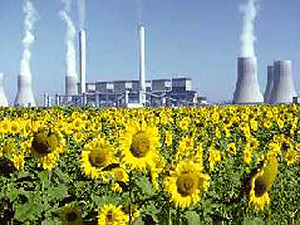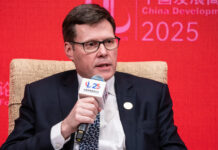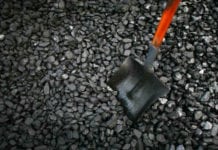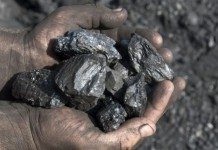
[miningmx.com] – WHILST the impact of Eskom’s load-shedding, now exacerbated by the leadership vacuum in the company, is sure to damage South Africa’s economic growth, the feedback from the country’s mining sector is that it’s dealing with the crisis like any of the labour or regulatory headwinds it routinely faces.
This is not to underplay the impact of above-inflation tariff increases, or unreliable supply.
In fact, so concerned is Neal Froneman, CEO of Sibanye Gold, by Eskom’s predicament that he intends his company to become self-sufficient in sourcing its power supply, and even generate revenue off its self-sufficiency by wheeling excess supply to the South African power grid.
Sibanye Gold said in February it would build a R3bn solar-powered facility near its Driefontein mine on the West Rand to supply 150MW with the help of development funding institutions, as yet unspecified.
The problems of the initiative, however, are two-fold.
Firstly, 150MW is only 30% of its total 500MW power needs, and secondly, there doesn’t seem to be a unified response by the industry.
This is in contrast to the way the sector has responded to other challenges that have cut across it lately such as the threat posed by silicosis compensation claims which the industry is facing together. It, of course, also co-operates when labour disputes arise of a certain order.
Said Froneman in an interview with Miningmx: “I believe this could be a gold industry-wide initiative owing to the importance of having scale’. Asked at the firm’s year-end figures for his view on broad co-operation, he was less forthcoming.
Srinivasan Venkatakrishnan, CEO of AngloGold Ashanti, was similarly vague: “It is an industry issue to find a resolution in consultation with [South African] Government,’ he said.
He added, however, that building power generation sets beyond what’s needed to transport employees in the even of a power emergency was not a priority’.
“It didn’t make sense to build a power station. Grid power is more efficient and while we continue to look at green energy, such as solar power, this would only provide stand-by power for us,’ he said.
Power costs are becoming an increasingly meaningful fixed cost to gold mining, doubling from 10% several years ago to 20% today for both Sibanye Gold and AngloGold Ashanti.
Impala Platinum CEO, Terence Goodlace, said the company was considering providing itself with power through fuel cell technology, but in the end Eskom related power problems will have a bearing on the company. “We’ve got a detailed plan on how to reduce power, and what we turn off.
“But once we get to 20% [stage 3 load-shedding] we are going to have to start closing shafts down,’ he said. “We’d start by looking at the lowest contributing shaft – since we know what does what – if the situation gets worse,’ he said.
The newsflow from finance minister Nhlanhla Nene’s budget wouldn’t have exactly been heart-warming to mining firms either.
Nene announced an increase in the electricity levy to 5.5 cents per kilowatt hour (c/kWh) from 3.5c/kWh with 2c/kWh to be removed after the carbon tax, which was delayed two years in the previous budget, has been implemented.
According to Eugene King, an analyst for Goldman Sachs, the higher levy as well as the increase in the annual tariff increase some 4% over the level previously announced by the National Energy Regulator of South Africa (Nersa) to 12.69% from 2016 could lead to a 50% plus increase in electricity costs for South African miners where power is about 15% to 20% of total bills.
“Overall, negative newsflow for South Africa based miners,’ said King. “Electricity supply has been irregular which has led to lost production.
The new 50% proposed hike in electricity bills would negatively impact earnings and reduce their competitiveness vis-a-vis global miners in the current environment where we are witnessing flattening of the cost curve,’ he said.
The bearing of power cost increases depends on what mining stocks one is thinking about, however.
About 25% of AngloGold Ashanti’s asset base is exposed to South Africa, but only 1% for Gold Fields, while Harmony Gold and Sibanye Gold have 90% and 100% exposure respectively.
From a platinum perspective, Implats is the least exposed (50%) while Lonmin is 100% exposed and Anglo American Platinum (Amplats) has some 88% exposure, according to King.
Elsewhere, however, gold miners simply roll with the punches.
Niel Pretorius, CEO of DRDGold, a gold retreatment company, said it had agreed with Eskom to lower usage at its Ergo operation on the East Rand by 10% in the event of phase 1 and phase 2 load-shedding, in which electricity supply is cut 1,000MW and 2,000MW nationally, on condition it receives two-hours notice which gives it enough time to thrift power between operating units.
Amplats has similar flexibility in its set-up to tackle Eskom’s load-shedding schedule.
Owing to the fact that its processing facilities are not operating at full tilt, it is able to cut back on power supply to these units allowing its mining operations to continue at full tilt.
For the time being, Sibanye Gold is on its own as it seeks to build its own power source. As such, it’s highly risky, especially as Froneman hinted in his interview with Miningmx, that Sibanye may one day even seek to own the coal that would supply a power station.
A report by Deloitte, however, suggests mining companies seeking to enter the energy market on their own run considerable risks since building power stations is a complex task well outside the core competence of a miner.
“Where mining companies choose to participate actively in independent power producers, they may choose to partner with other coal producers,’ said Chris de Vries, an associate director of Venmyn Deloitte, a mining advisory firm.
In this model, mining firms can share the risk of operating an IPP or it may choose to build a small modular generation unit to reduce the risk of a larger power plant, said de Vries.











